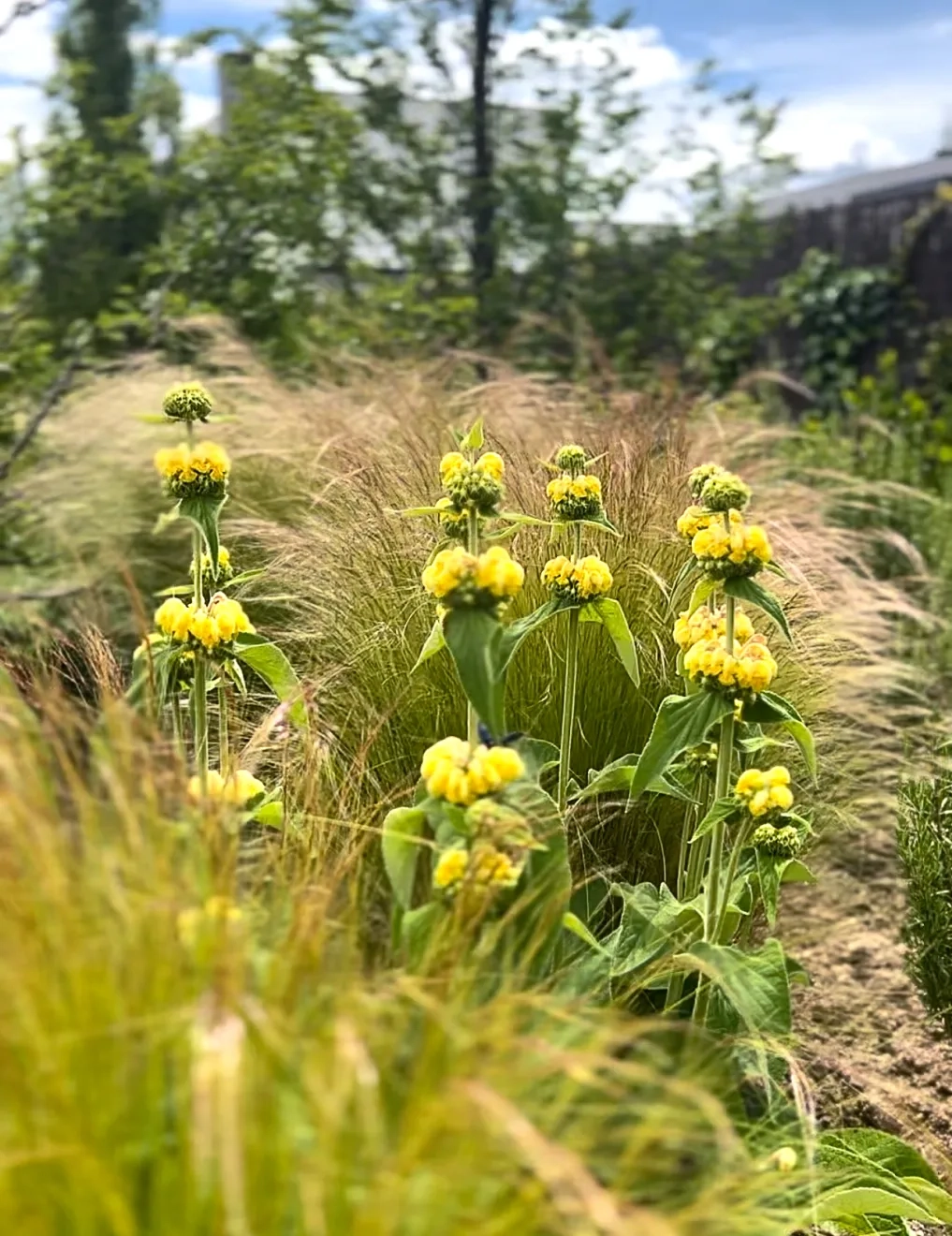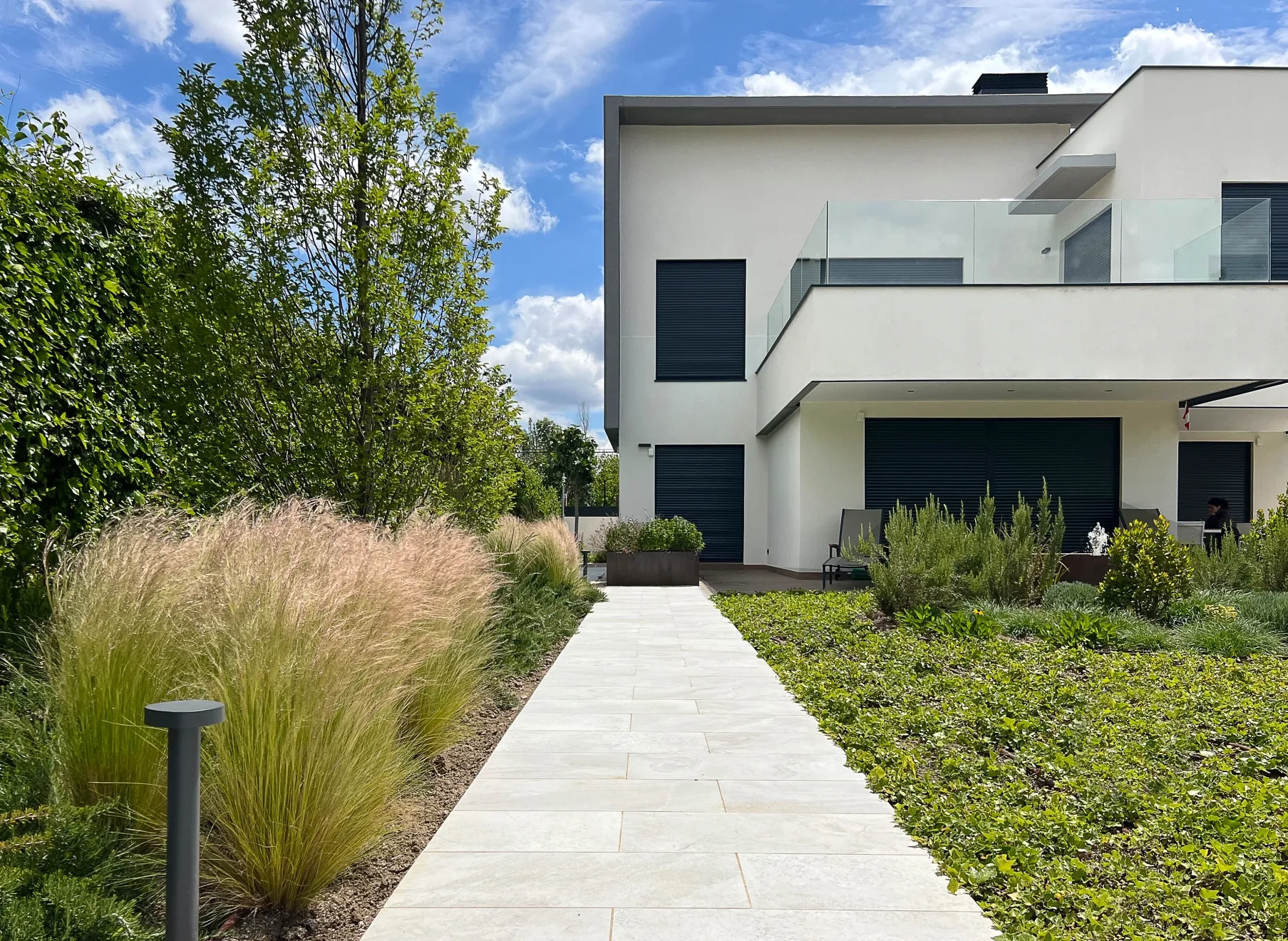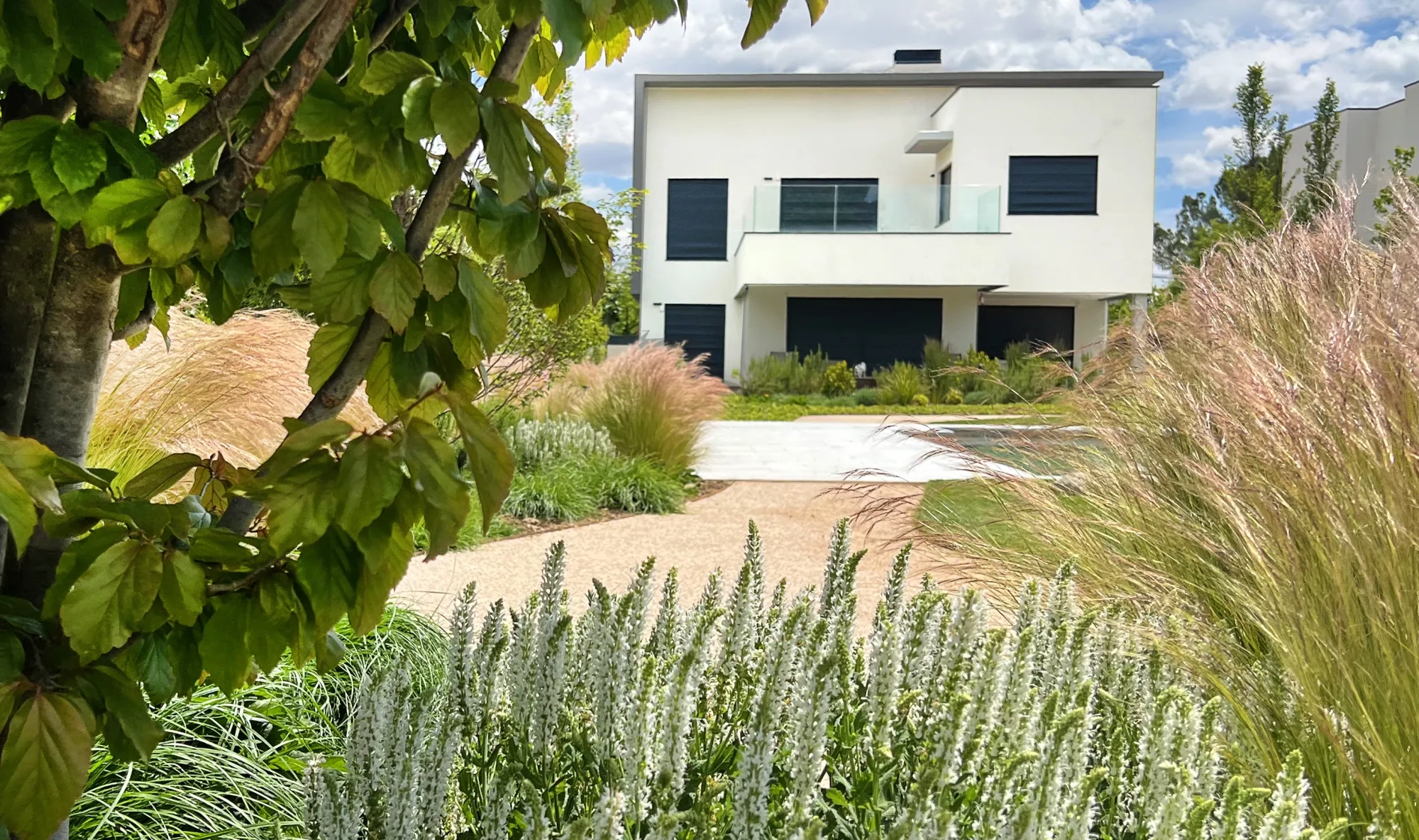A garden inspired by Burle Marx
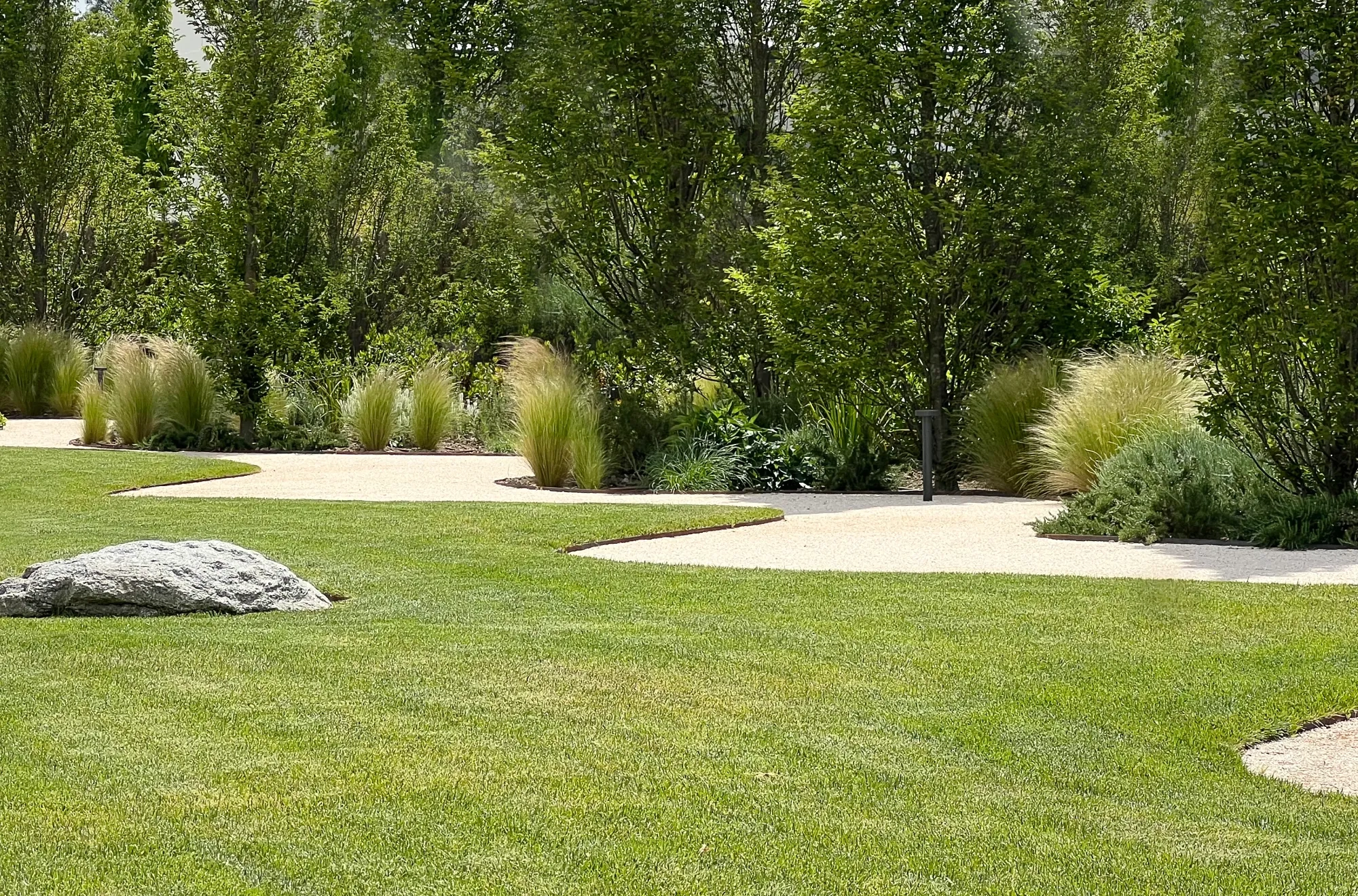
Date
2021-2022
Location
Madrid (Spain)
Type
Residential
Trees
19
Area
1.500 m2
Status
Built
The pathways wind through the garden, providing a sense of exploration. The curves that shape these pathways also create intimate spaces from which different viewpoints of the garden can be appreciated.
GARDEN STRUCTURE
The garden has been designed as a journey. In the central area, there is a spacious, unobstructed area with a small lawn that visually expands its surface thanks to the design. In the center, there is a beach of fine silica sand, and around the perimeter of the lawn, a gravel path frames the lawn like a flowerbed.
The garden features a small forest of parrotias (Parrotia persica) and a non-linear alignment of hornbeams (Carpinus betulus), a creative whim of the landscape designer that adds an ironic touch to the garden design; although the hornbeams are aligned, they follow the shape of the path rather than the user’s perception. This approach plays with the concept of alignment, reinventing the formal landscape language and adapting it to the work of Roberto Burle Marx.
The perimeter of the garden has been conceived on different levels, creating a green terracing effect. The first barrier consists of an ivy cover (Hedera helix), followed by a second line of strawberry trees (Arbutus unedo), leaving space for the third level with ornamental species in contact with the paths. This technique, inspired by the designs of Burle Marx, helps create a sense of abundance and variety, offering different perspectives and views as one moves through the space.
THE BOTANY
We have prioritized the use of native flora. In our design, we have combined native species with ornamental plants, using layers of vegetation and different height levels to add depth and structure to the garden.
Among the plant species, we find rosemary (Rosmarinus officinalis) and trailing rosemary (Rosmarinus officinalis 'Prostratus'), lavenders (Lavandula stoechas), and various sages (Salvia spp.). Among the ornamental plants, we have proposed various perennials and grasses such as phlomis (Phlomis spp.), delphinium (Delphinium spp.), fountain grass (Pennisetum alopecuroides), and Mexican feather grass (Nassella tenuissima). In areas near the fountain, we have also planted some specimens of dwarf mock orange (Pittosporum tobira ‘nana’), feather reed grass (Calamagrostis x acutiflora "Karl Foerster"), and African iris (Dietes grandiflora).
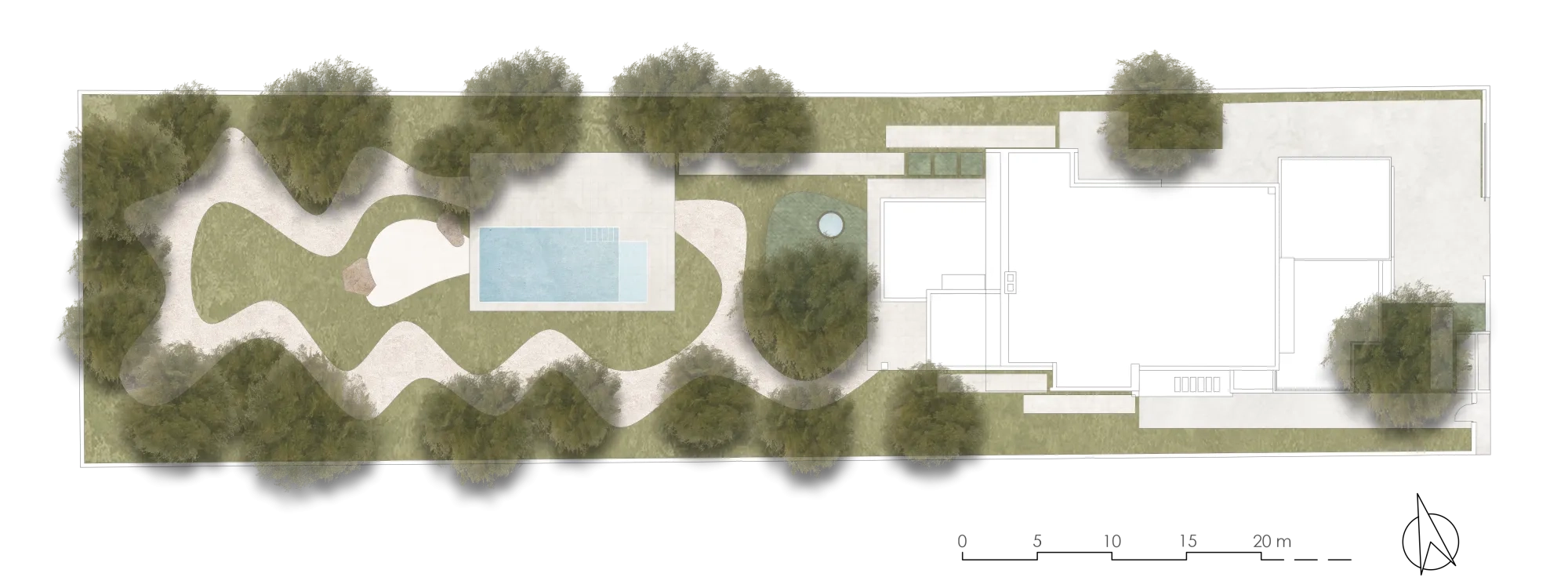
ABOUT BURLE MARX
Burle Marx was a pioneering and revolutionary figure in his field. He was greatly attracted to the uniqueness of native flora and its incorporation into the design of public and private spaces. One of the most distinctive features of Burle Marx's work is his use of curves. For him, straight lines and rigid shapes could not capture the dynamic essence of nature. His designs flow with smooth, organic curves that guide the visitor through the space in a natural way. (Photo: El País)
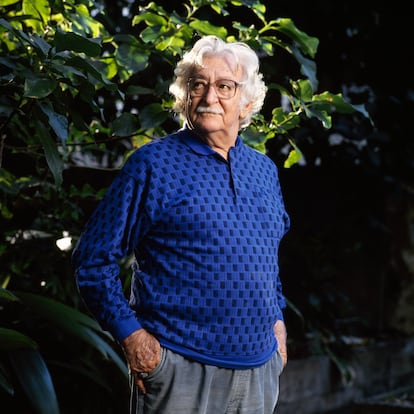
The inclusion of a water mirror next to the house, surrounded by vegetation, or the incorporation of small local craft elements, such as lanterns that integrate perfectly among the plants, are also a direct nod to the aquatic elements that Burle Marx so often used.
In our design, the paved paths intertwine with the garden using geometric forms associated with the architecture. The organic lines are reserved for nature, creating a visual dialogue between human order and natural chaos. This interaction reinforces the connection between the built space and the landscape, a fundamental principle in the work of Roberto Burle Marx.

